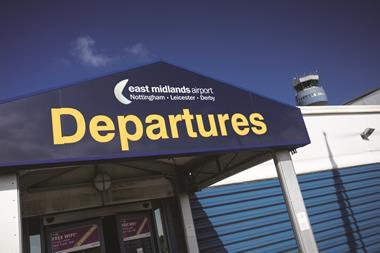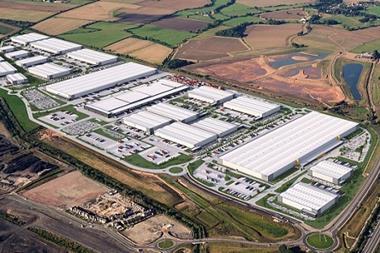We live in an age where we can access anything at our fingertips, regardless of the time of day or our location, and we absolutely take it for granted.

As the front end of online retail becomes ever more enticing, the back end, in this case the industrial space necessary to house and distribute the stock, is fast approaching boiling point.
The UK’s supply strategy lacks the foresight to accommodate demand. After record demand in 2016, in H1 2017 there was 6.8m sq ft of take-up of units larger than 250,000 sq ft. This equates to 28% above the 10-year average and 8% above the five-year average.
Such is the demand that, at present, the UK has little under one year’s worth of industrial space left as the growth in ecommerce and a renewed demand for British goods places even greater pressure on the country’s industrial stock.
The availability of big sheds (units of more than 100,000 sq ft) has fallen by 72% since 2010, with only 2.8m sq ft of new or refurbished ‘ready-to-occupy’ space available in the UK.
Although we are seeing more ‘design and build’ in the industrial market, particularly in areas with low availability, there is just 17m sq ft of industrial space under construction.

Against this backdrop, investor interest in forward-funding opportunities in the industrial sector is growing. A survey by Colliers found only 5,413 acres of prime UK logistics land - plots of more than 50 acres - with planning consent. Prime logistics sites with consent in the Midlands represent 1,470 acres, an equivalent of 27% of all UK land, although demand for large units in the region accounted for 36% in 2016. Demand for logistics space in the North West is also fast outstripping the available land, which presently stands at only 787 acres - again, of plots of 50 acres or larger.
There are several examples of large sites from across the UK:
- SEGRO Logistics Park East Midlands Gateway is a new 6m sq ft multimodal development. Recent deals include Arcadia Group taking 403,990 sq ft.
- Omega North/South in Warrington is a 60-acre site with planning consent for up to 820,000 sq ft. Tenants include Amazon, Asda and Plastic Omnium.
- London Gateway (pictured) has 9m sq ft of logistics development space on 560 acres. Occupiers include Lidl and SH Pratt Group.
- Bridgwater Gateway in Somerset is a 100-acre mixed-use scheme comprising industrial, offices and roadside. It will have the ability to accommodate units of 5,000 sq ft to 100,000 sq ft or more.
- Moving north, Iport at J3 of the M18 near Doncaster, south Yorkshire, is a 337-acre site with outline planning for up to 6m sq ft.
- Representing Scotland is Heartlands at J4A of the M8, a 70-acre site with planning for 1.5m sq ft of commercial accommodation.
So while there are sites capable of accommodating a good amount of new shed space, overall there is very little land available.
If the pace of land released doesn’t change, London will reach its industrial land targets in less than a year
One of the issues is protecting commercial land against the encroachment of residential development, which is proving difficult.
In west London, land that was expected to be released to the market gradually over 20 years vanished in only four. If the pace of land released doesn’t change and protective measures are not put in place, London will reach its industrial land targets in less than a year.
Competition for land in the UK shows little sign of abating. The property sector needs to wake up to more holistic approaches to development that incorporates industrial occupiers alongside residential and other uses.






























No comments yet